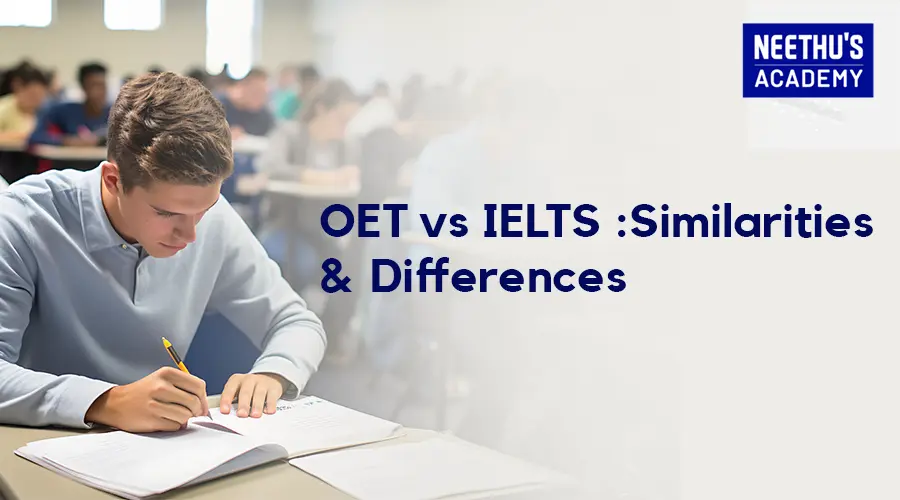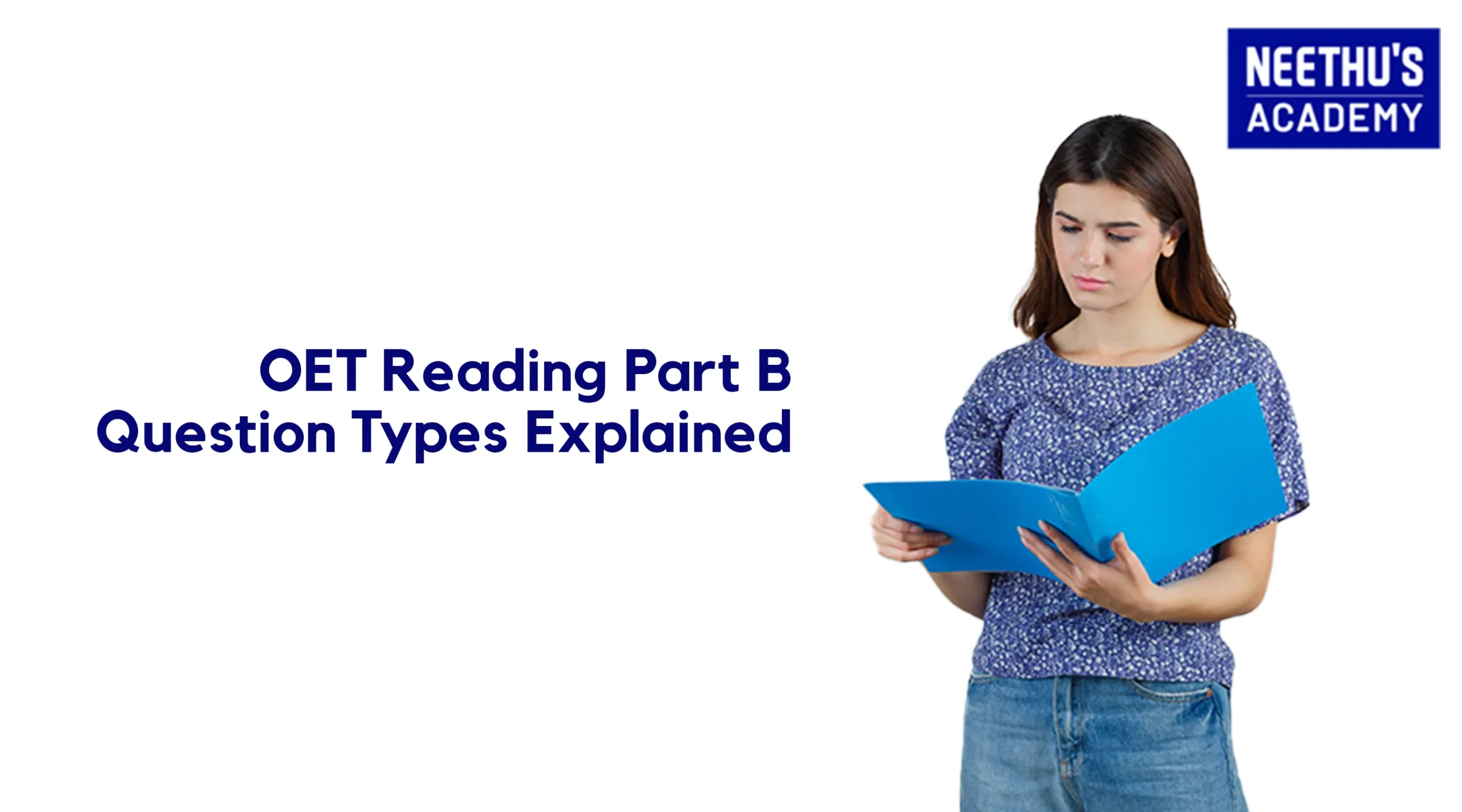OET vs IELTS: Similarities & Differences
When planning to study or work abroad, demonstrating English proficiency is crucial.
Among the various language testing systems available, the Occupational English Test (OET) and the International English Language Testing System (IELTS) are particularly significant. Each test serves distinct professional needs, making them essential for international mobility.
In this post, we will dive deep into the key differences between OET and IELTS, helping you decide which test best suits your professional needs. Read on!
What Is OET?
The Occupational English Test (OET) is designed to assess the language abilities of healthcare professionals who aim to register and work in an English healthcare environment. It focuses on real-world scenarios encountered in healthcare settings, ensuring effective communication with patients and colleagues.
OET would be ideal for the following healthcare professions:
- Medicine
- Nursing
- Dentistry
- Pharmacy
- Physiotherapy
- Veterinary Science
- Occupational Therapy
- Speech Pathology
- Dietetics
- Podiatry
- Optometry
- Radiography
Global Recognition: OET is recognized by regulatory healthcare bodies and councils in numerous countries, including but not limited to:
- Australia
- Canada
- New Zealand
- Qatar
- Singapore
- Spain
- United Kingdom
- United States of America
What Is IELTS?
The International English Language Testing System (IELTS) examination is very highly accredited and extremely flexible in assessing the English language ability of candidates who want to move and study or work in countries in which English is the primary language. Its wide acceptance opens many doors worldwide and is recognized as a barometer of language ability in many contexts.
- Academic Module: This is for students intending to attend a college or other professional courses in an English-speaking country. It tests one’s capacity to engage in higher-level discussions within an academic environment.
- General Training Module: Ideally geared toward prospective migrants at the secondary level to an English-speaking country for experiential work or training programs. It focuses more on basic survival skills in broad social and workplace contexts.
International Acceptance: IELTS has attained significant recognition and acceptance by thousands of organizations worldwide.
- Educational Institutions: For admissions and graduations
- Professional Bodies: For professional licensure and certification
- Government Agencies: Process of immigration and permanent residency applications
Also Read: How to register for the IELTS exam?
Similarities Between OET and IELTS
Although the emphases of OET and IELTS is very different, several structural similarities are essential for the candidate to consider. In most respects, the two tests test the same four skills, which are crucial to the efficient use of language:
- Listening: Assessing the ability to understand spoken English in various contexts.
- Reading: Evaluating comprehension through diverse text types
- Writing: Testing the ability to produce coherent and contextually appropriate text.
- Speaking: Measuring fluency and the ability to engage in verbal communication.
In addition, it does not consider a pass or fail on either OET or IELTS. These two tests score on a very detailed competency scoring system to rate proficiency levels, which aligns closely with the Common European Framework of Reference for Languages (CEFR). In line with a spectrum, it would allow for a more detailed understanding of the candidate’s language ability than measuring competence in either a yes or no fashion.
This scoring procedure is beneficial for institutions that need to use the respective language competencies in the evaluation of the language potential of each candidate. It is, therefore, to reflect practical language usage aptitude accurately.
Difference between OET and IELTS
Even though both OET and IELTS evaluate the candidate’s competency in the English language, they have different agendas, target audiences, foci, and types of formats to which the candidates should pay critical attention.
Content Focus:
- OET: Tailored for health professionals and arises from real-life situations in health that challenge the language skills of the targeted test takers. Its test material is based on real-life healthcare communication issues, including patient consultations, writing referral letters, and understanding patient care.
- IELTS: It includes a broader range of topics that are useful for academic, professional, and migration objectives. It contains interpreting graphs and charts, essay writing, and arguing on different social and cultural issues, providing a well-rounded assessment of English language skills.
Test Formats:
OET and IELTS differ in their approach to testing these skills:
- OET: Because OET is for specific professions, the differences in the format of the Speaking and Writing tests justify them.
- IELTS: It is standardized for all candidates to sit for the IELTS, but there are two versions. The two modules, Academic and General Training, only differ in the Reading and Writing sections.
Here’s a snapshot of the difference between OET and IELTS to help you decide which one suits your career aspirations best:
| Aspect | OET | IELTS |
|---|---|---|
| Focus | Healthcare specific scenarios | Broad academic and general topics |
| Test Versions | Profession-specific variations | Academic and General Training |
| Writing Test | Profession-based tasks | General or academic writing tasks |
| Speaking Test | Role plays based on healthcare settings | Face-to-face interview on general topics |
| Scoring | The results are graded from A (highest) to E (lowest) | It ranges from 0 to 9 |
| Duration | It generally takes around 3 hours and 20 minutes | The total test time is 2 hours and 45 minutes |
Which Test Should You Take?
When deciding between OET vs IELTS, several factors should guide your choice:
- Occupation: OET is especially designed for professional healthcare workers. This means that as a nurse, a doctor, a dentist, or a pharmacist, OET could take you one step closer to life in your profession.
- Target Country: Follow the relevant country’s professional or migration body’s specific requirements for the country where you want to work or study. IELTS is universally accepted for numerous purposes at many professional and migration levels worldwide, while OET is universally accepted almost exclusively within the healthcare sector.
- Specific Requirements: A few institutions or licensing bodies may prefer one test over the other in a particular context in which the language will be used.
Apart from this, check their pros and cons to evaluate which test aligns best with your career aspirations and language proficiency needs:
OET:
- Advantages: The knowledge provided is for professionals in the healthcare industry.
- Disadvantages: It is not applicable if you are looking at opportunities outside healthcare.
IELTS:
- Advantages: It is universally accepted and applied worldwide in various areas, including education and business.
- Disadvantages: The specific language used in the context of healthcare may not be included.
By evaluating these factors, you can determine whether OET or IELTS is more suitable for your career aspirations and language proficiency needs. This will help you prepare effectively for the test that will support your future professional or academic goals.
Also Read: What’s the difference between IELTS and PTE?
Wrapping Up
As we have explored the OET and IELTS differences, it’s clear that each test serves distinct career and professional pathways. When choosing between OET and IELTS, consider your profession, your target country, and the specific language requirements of potential institutions or employers.
Make sure you reflect on your specific circumstances to select the exam that best prepares you for your future endeavours. Also, check their advantages and disadvantages to ensure the test you choose aligns with your career goals and language proficiency needs effectively.
Frequently Asked Questions





